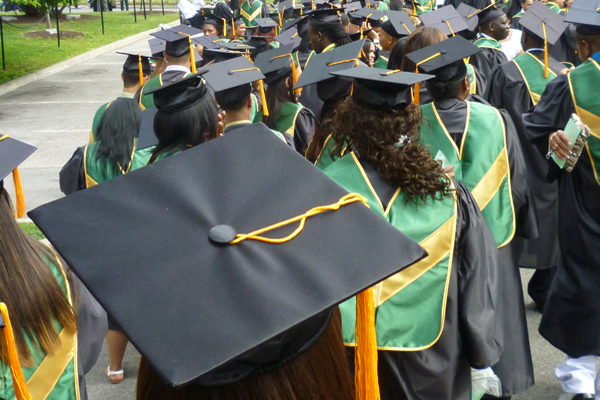
Photo by: Jarrett
Mayor Bloomberg’s decade-long school reform set out to reduce the race-based achievement inequities that characterize the city’s public schooling outcomes. Bloomberg and his first Schools Chancellor, Joel Klein, defined the school system’s racial achievement gap as the “key civil rights issue of our time.” In 2009, Chancellor Klein proclaimed that “neither resources nor demography is destiny in the classroom.” And in 2010, a broadside that Klein wrote with Michelle Rhee, the founder of Students First, declared, “The single most important factor in determining whether students succeed in school is not the color of their skin or their ZIP code or even their parents’ income – it is the quality of their teacher.”
The Bloomberg administration mounted systemic efforts to reduce inequity by expanding school choice through creating new small schools and charter schools, and by closing large numbers of struggling schools. But after a decade of reform efforts, ZIP code and income are still the major factors predicting college success for New York City’s high school graduates. Is Demography Still Destiny? a study recently conducted by the Annenberg Institute for School Reform (AISR), found that the college readiness rates of the city’s high school graduates were strongly and negatively correlated with the percentage of black and Latino residents in the city’s neighborhoods. The average income in those neighborhoods was almost as highly correlated with readiness. So counter to the mayor and the former chancellor’s assertions, ZIP code, race or ethnicity and income still strongly determine students’ academic outcomes across the city’s classrooms. To the extent that students’ academic outcomes determine their future possibilities, demography – zip code, race or ethnicity and income – still shape students’ destinies as well.
AISR’s study can be briefly described. In 2010 the New York City Department of Education (NYCDOE) developed a college readiness indicator which uses students’ Regents’ scores, SAT results and coursework completion indices to assess their capacity to succeed in college. In 2011 AISR requested and received NYCDOE data on the college readiness of the city’s high school graduates, broken down by individual students’ ZIP codes. AISR amalgamated those ZIP codes into a citywide neighborhood index, and then analyzed the relationships between key socio-economic factors (primarily race/ethnicity and income) of students’ neighborhoods and students’ college readiness scores, aggregated up to the neighborhood level.
AISR’s findings were grim. The city’s high school graduates’ college readiness rates were overwhelmingly correlated with their neighborhoods’ racial composition, income and related socio-economic factors. For example, the higher the mothers’ level of education in any city neighborhood, the higher the college readiness rates of the students residing in that neighborhood. Unemployment and single motherhood, conversely, were negatively correlated—the higher the rates of unemployment and single motherhood in any city neighborhood, the lower the college readiness rates of the students residing in that neighborhood. Moreover, the mean income in each neighborhood was very highly correlated with students’ college readiness scores – the lower any neighborhood’s mean income, the lower the college readiness scores of the students living in that neighborhood.
But the factor most strongly correlated with college readiness was the racial/ethnic composition of students’ neighborhoods. The higher the percentage of black and Latino residents in any city neighborhood, the lower the college readiness scores of the students residing in that neighborhood. So, unfortunately, demography is still destiny, in terms of the chances for success in college for the city school system’s high school graduates.
The NYCDOE’s initial response to the AISR college readiness study was that the rates were worse in 2002, before the regime’s reform effort began. This response may be accurate, though it is hard to be sure because there was no readiness indicator available to measure high school graduates’ preparedness for college a decade ago. Still, the scale of current failure is so universal across the city system, with less than 25 percent of all the city’s students graduating college-ready, that it is hard to imagine significant progress across the past ten years.
In spite of the dramatic expansion of choice programs that have created almost two hundred small high schools and one hundred charter schools, the closure of some 150 struggling schools, and the development of increased options in the city’s high school admissions process, at least 75 percent of all the city’s students are graduating high school unprepared for college. Most of those unprepared graduates are black and Latino, most of them are from poor families and most of them live in neighborhoods comprised of large majorities of black and Latino residents.
What might improve this grim set of outcomes?
Is Demography Still Destiny? argues that changing the high school admissions process to include more choice for high-risk students, and improving both in-school and neighborhood-based counseling to improve capacity among students and their families to make more appropriate high school choices, might make some difference. The AISR report also suggested that, as the three economists who designed the expanded high school choice process concluded, “New York City needs more good schools.”
But the problem of inadequate preparation that leads to such dismal college readiness rates at graduation begins with ineffective instruction in elementary school, and is compounded by widespread instructional failure at the middle school level. The scale of change necessary to produce a super-majority of the city’s students ready to succeed in college requires the replacement of the past decade’s structural reforms – choice, empowerment, accountability based on test scores – with an iron-willed commitment to provide effective instruction in all the city’s classrooms.








